New Mong

The New Mong alphabet is an alternative way of writing the
Mong or Hmong languages, which are spoken in Vietnam, Laos, Thailand
and China. It was devised by Ian James, who finds the use of the
modern Latin alphabet to represent Asian languages uncomfortable,
especially considering how some of the most beautiful scripts in the
world emerged in Asia.
For various reasons, Ian decided to design a script for Mong based
on historical precedents of style and evolution. This led him to base
much of the design on Pallava, mother of most SE Asian scripts (Mon-Burmese,
Khmer of Cambodia, Kawi and others of Indonesia and neighbouring
Pacific regions, and nearly all the Tai language scripts including Lanna,
Thai, Lao, Tai-Lue and Dai-Deuhong).
Some of his glyphs are pure Pallava, others are based on variations
and innovations found in more recent script-forms; many are “generic”
SE Asian forms. A slight hint of the Pahawh-Hmong aesthetic is also
evident. And some of the phonetic ideas presented in RPA (Romanized
Popular Alphabet of 1953) are preserved.
Notable features
- Type of writing system: syllabic alphabet
- Direction of writing: left to right in horizontal lines.
- Could be used to write: Green Mong or White Hmong
- Most words (ie. non-compound) are a single syllable, consisting
of consonant + vowel + tone. - The many consonants (including lateral-release, pre-nasalized,
pre-aspirated and post-aspirated phonemes) each have a single glyph,
except for 10 listed later which use a nasalization prefix. - Some complex phonemes take the form of ligatures (two or more
glyphs merged into one). - The vowel signs are written above, below or within the gap between
consonant and tonal marker. - Like the RPA, tones are written after the consonant-vowel figure.
Unlike the RPA, the ‘middle’ tone is also marked. - Gaps appear in the script only between phrases. The dots of the
tonal markers help to pace out the words within a phrase.
New Mong alphabet
Primary consonants
Each glyph is given with the RPA and IPA equivalents. The last glyph
is a glottal plosive, used to carry initial vowels.
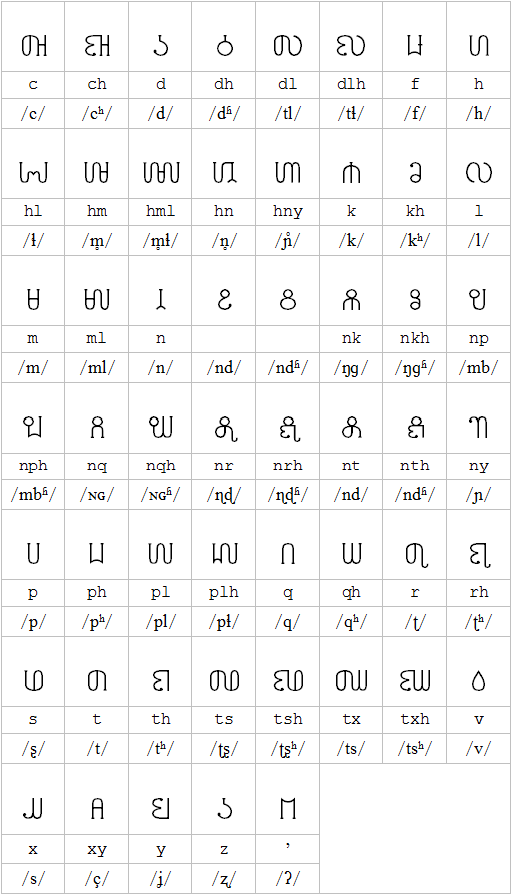
Vowels
The consonant /qh/ is used to display the relevant glyph in position.
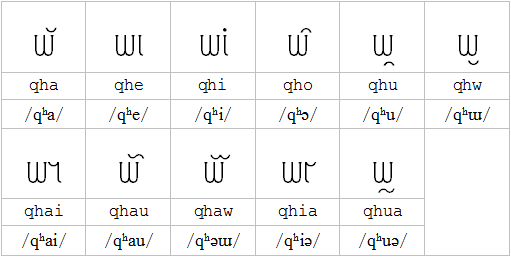
Nasalization
There are 3 possibilities for post-nasalized vowels.
The ‘pre-nasal’ marker /n-/ is a stand-alone prefix form.
Some simpler consonant-glyphs have the circular symbol already fixed to their top.
For the already complex cluster phonemes, the stand-alone prefix is used.
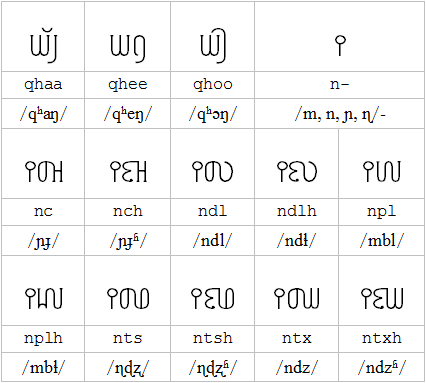
Tone markers
As in RPA, the tone markers come at the end of the syllable.
This is a less cluttered method than that used in other tonal scripts of the region.
The letters of RPA remain, but are more symbolic than their Latin form.
Each tone marker also has a dot below, which helps break up phrases into syllables,
for clarity and a visual sense of rhythm.
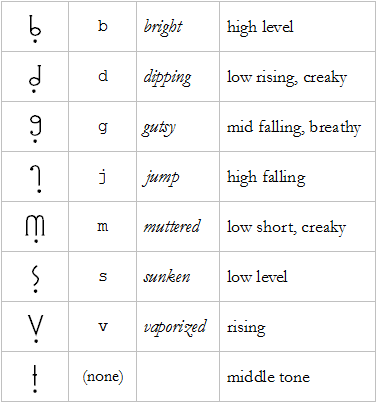
Numerals and numbers
Two forms are suggested here. The first is a generic form of a Tai/Mon system.
The second is simply borrowed from the Pahawh-Hmong system.
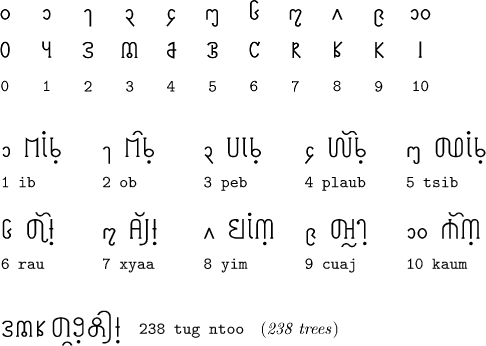
Sample text
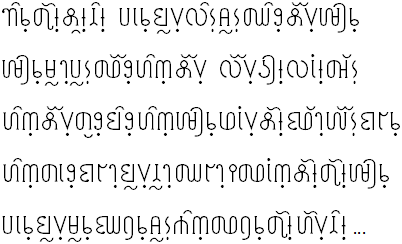
Transliteration
Nyob rau ntu no, peb yuav los xyuas txog ntawv Hmoob.
Hmoob muaj puas-tsawg hom ntawv, lawv zoo li cas,
hom ntawv twg yog hom Hmoob siv ntau tshaj plaws thiab
hom teg thiaj yuav nuaj txiaj-ntsim ntau rau Hmoob,
peb yuav muab txheeb-xyuas kom tseeb rau hauv no …
Short extract from an article at www.hmongnet.org
by Yeeb Nyiaj-sua Lis.
